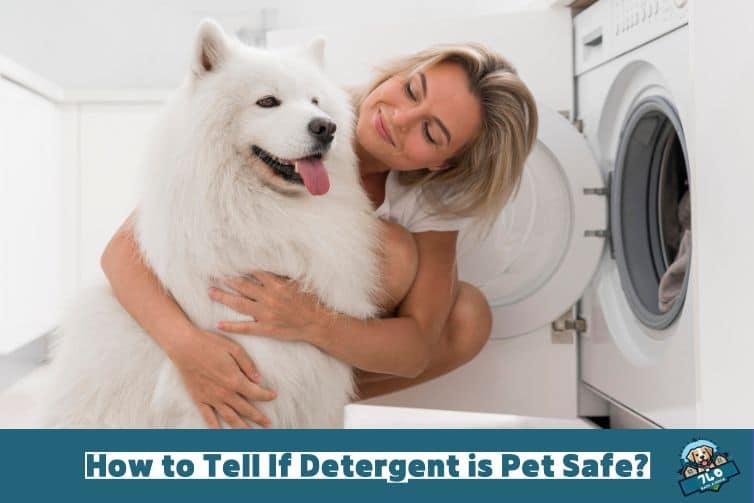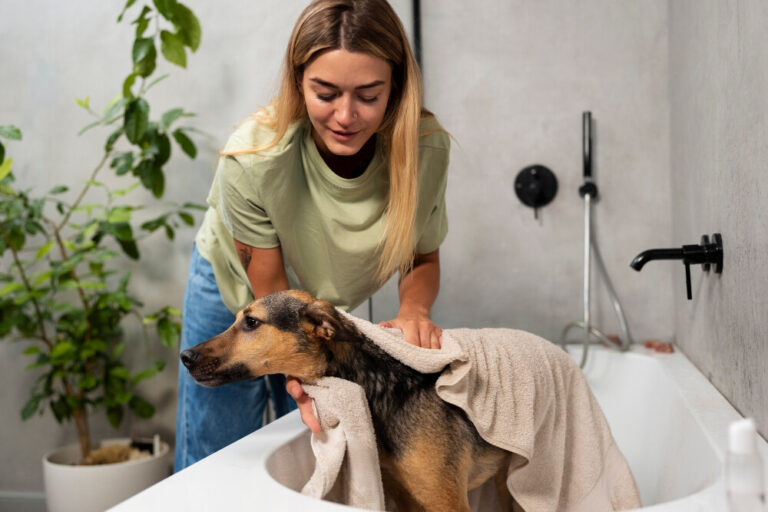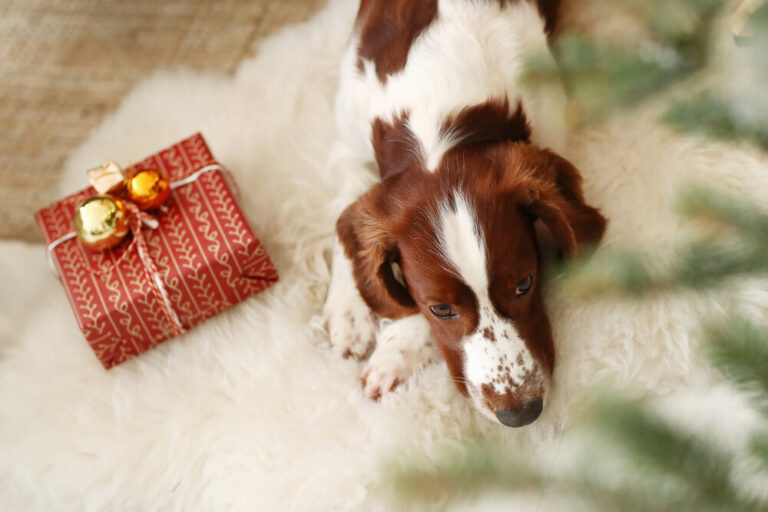How to Tell If Detergent is Pet Safe?

As pet owners, we do everything to keep our furry friends safe, but have you considered how your laundry detergent could affect their health? Do you know how to tell if a detergent is pet safe or not?
Your pet is your family, and keeping them safe means looking beyond food and toys. You would be surprised to know that even your laundry detergent could affect their health? Many traditional detergents contain chemicals that might be harmful to your furry friends.
This guide will show you how to identify, use, and choose the best pet-safe detergent to ensure your pet stays healthy and happy.
What Is Pet-Safe Laundry Detergent?
Pet-safe detergents are specially formulated to avoid harmful chemicals that can irritate pets’ sensitive skin, eyes, or stomachs. They exclude harmful substances like sulphates, phosphates, fragrances, and dyes.
Differences Between Regular and Pet-Safe Detergents
Unlike regular detergents that might leave chemical residues, pet-safe options use biodegradable and non-toxic ingredients. They’re safer for your pets, your family, and even the environment.
Why is Pet-Safe Laundry Detergent So Important?
Your pet’s health is precious, but everyday laundry choices might put it at risk. Regular detergents may seem harmless, but they often contain chemicals that could harm your furry friend.
Common Harmful Effects of Regular Detergents on Pets
Exposure to regular detergents can lead to:
Skin Irritations: Chemicals like sulfates, fragrances, and dyes can irritate your pet’s sensitive skin. This may lead to redness, itching, or even painful rashes. Pets with frequent contact with these residues, such as lying on washed bedding, are at an increased risk.
Stomach Issues: Pets often groom themselves by licking their fur or bedding. If the fabrics have detergent residues, ingesting them can upset their stomachs. This may result in vomiting, diarrhea, or other digestive issues that require immediate attention.
Allergies: The strong scents and chemical residues left behind on clothes or bedding can cause respiratory distress in pets. Sneezing, coughing, and labored breathing are common symptoms of allergic reactions triggered by these detergents. Prolonged exposure might even lead to chronic respiratory issues.
Benefits of Switching to Pet-Safe Options
If you’re prioritizing your pet’s well-being, create a safer, toxin-free environment for them. Because this will lead to:
Peace of mind: You’ll know your pet isn’t exposed to toxins.
Safety standards: Certified pet-safe detergents follow strict guidelines.
Healthier pets: Reduced risk of irritations and allergies.
How to Tell What Is a Pet-Safe Laundry Detergent?
The right laundry detergent can protect your pet’s health, but many regular detergents contain harmful chemicals. These chemicals can cause skin irritations, allergies, and even digestive issues. How do you keep your pet safe from these risks? Here’s what to look for and avoid when picking the right detergent.
Label Reading 101: What to Look for and Avoid
Certifications: Keep an eye out for certifications such as “Certified Pet Safe” or approvals from trusted organizations like the RSPCA. These endorsements are a strong indicator that the product has been tested and deemed safe for your furry companions.
Ingredients List: Avoid detergents containing ammonia, chlorine, formaldehyde, and benzalkonium chloride. These harsh chemicals can irritate your pet’s skin, cause respiratory problems, or lead to toxic reactions if ingested. Instead, opt for detergents labeled “free of dyes and fragrances” or “natural.”
Certified Pet-Safe Detergent Labels and What They Mean
Certifications ensure the detergent meets strict safety standards to protect your pet. These include testing for toxicity and potential irritants, ensuring harmful chemicals aren’t present. When you choose products with trusted certifications, you can be confident your pet is safe from harmful substances in their laundry.
Decoding Labels: Non-Toxic vs. Biodegradable
Non-toxic: Free from harmful chemicals that could endanger your pet’s health.
Biodegradable: Breaks down safely in the environment, minimizing damage to waterways and ecosystems.
How to Use Pet-Safe Laundry Detergent Effectively?
Using the right pet-safe laundry detergent keeps your furry friend’s belongings clean and safe from harmful residues. Ready to get it right? Here’s how to do it step by step.
- Measure the Right Amount
Use the recommended quantity of detergent. Overusing detergent can leave residues, while underusing might not clean thoroughly.
- Choose the Right Water Temperature
Wash pet items in warm or hot water to remove dirt, bacteria, and allergens effectively. Always check the care labels on fabrics first.
- Double Rinse
Run an extra rinse cycle to ensure no detergent residues are left on the items. This step is crucial for reducing the risk of skin irritations or allergies.
- Separate Pet Items
Wash your pet’s belongings—bedding, toys, and blankets—separately from your regular laundry to avoid cross-contamination.
- Dry Thoroughly
Use a dryer on low to medium heat or air dry. Make sure items are completely dry to prevent mold or mildew.
- Clean Washing Machine Regularly
Clean the detergent compartment and drum periodically with a pet-safe cleaner or white vinegar to prevent residue buildup.
Dosage Recommendations for Optimal Cleaning
Use the recommended amount of detergent to prevent residue buildup and ensure proper cleaning. Always check and follow the instructions for:
Washing Machine Compartments: Place the detergent in the correct compartment to optimize its effectiveness.
Load Sizes: Match the detergent quantity to the size of the laundry load for thorough cleaning without excess residue.
Common Mistakes to Avoid When Washing Pet Items
Washing your pet’s belongings may seem simple, but a few common mistakes can compromise cleanliness and safety. Here’s what to do to avoid when you wash pet items:
Don’t Use Dryer Sheets or Fabric Softeners
These products often leave behind chemical residues that can irritate your pet’s skin or be harmful if ingested. Opt for natural alternatives like white vinegar to soften fabrics safely.
Don’t Skip an Extra Rinse Cycle
Residual detergent on pet items can cause allergies or irritations. Always include an additional rinse to remove any leftover detergent.
Don’t Overload the Washing Machine
Crowding the machine prevents proper cleaning and rinsing. Wash pet items in smaller loads for thorough results.
Don’t Ignore Care Labels
Some fabrics require specific cleaning methods. Always check care labels to avoid damaging pet bedding or toys.
Clean the Washing Machine Regularly
Detergent buildup and pet hair in the washer can transfer to future loads. Clean your machine regularly to maintain hygiene and optimum results.
Is It Safe to Wash Toys with Detergent?
Yes, it is safe to wash toys with detergent, but only when using a pet-safe option.
Wash Soft Toys Safely with Pet-Safe Detergents
Soft toys can harbor bacteria and dirt. Use a gentle, pet-safe detergent and wash on a delicate cycle to keep your pet’s favorite companions clean and safe.
Clean Hard Toys: Do You Need Detergent?
Hard toys are best cleaned with a natural cleaning solution like diluted white vinegar. Avoid using detergents unless they are explicitly labeled as pet-safe.
Which Cleaning Products Aren’t Safe for Pets?
Certain cleaning products can pose serious health risks to your furry friends. Here are some common offenders to watch out for:
Household Cleaning Products That Pose Risks
Ammonia-Based Products: Found in glass cleaners and floor polishes, ammonia can cause respiratory irritation and chemical burns.
Chlorine: Common in bleach and disinfectants, chlorine is toxic if ingested and can harm the skin and eyes.
Phenol-Based Cleaners: Used in some disinfectants and household sprays, phenols can cause liver and kidney damage if absorbed or ingested.
Fabric Softeners and Dryer Sheets: These often contain chemicals that linger on fabrics, potentially irritating your pet’s skin or causing toxicity if licked.
Floor Cleaners with Strong Fragrances: Artificial fragrances may contain harmful compounds that can trigger allergies or respiratory issues.
Drain Cleaners and Oven Cleaners: These harsh substances are highly toxic and can cause severe burns or poisoning if pets come into contact with them.
Hidden Hazards in Fragrance-Enhanced Cleaners
Fragrance-enhanced cleaners might smell pleasant, but they often contain hidden dangers for pets. Artificial fragrances in these products commonly include chemicals like phthalates, which can disrupt hormonal balance and trigger allergic reactions. Additionally, volatile organic compounds (VOCs) present in scented cleaners can irritate your pet’s respiratory system and contribute to long-term health concerns.
Even seemingly natural ingredients, like essential oils, can be harmful. Oils such as tea tree, eucalyptus, and citrus are toxic to pets, especially cats, if inhaled or ingested. Lingering residues from these products can cling to surfaces and fabrics, leading to prolonged exposure when your pet licks, chews, or rubs against them.
DIY Pet-Safe Detergent Recipes
Creating your own pet-safe detergent is easy, cost-effective, and ensures you know exactly what goes into the product. Here are two simple recipes to try:
1. Gentle Baking Soda Detergent
This recipe is ideal for cleaning pet bedding and pet toys while being gentle on sensitive skin.
Ingredients: 1 cup baking soda, 1/2 cup washing soda, 1/2 cup liquid Castile soap (unscented), 10 drops of lavender or chamomile essential oil (optional and pet-safe)
Instructions:
- Mix baking soda and washing soda in a large bowl.
- Slowly add the liquid Castile soap and stir until well combined.
- Add the essential oil for a light, calming scent (ensure the oil is safe for pets).
- Store the mixture in an airtight container and use 1-2 tablespoons per load of laundry.
2. Vinegar-Based Cleaning Solution
This natural detergent alternative is great for removing odors and softening fabrics.
Ingredients: 1 cup white vinegar, 1/4 cup baking soda, 2 cups water, 10 drops of pet-safe essential oil (optional)
Instructions:
- Combine vinegar and water in a spray bottle or jar.
- Add baking soda slowly to avoid fizzing over.
- Stir or shake gently to mix.
- Add a few drops of essential oil if desired.
- Use as a detergent replacement or fabric rinse to remove stubborn odors.
Precautions When Making Your Own Pet-Safe Detergents
Always test DIY detergents on a small area before using them widely. Avoid ingredients like essential oils that aren’t pet-safe, such as tea tree oil.
Conclusion: Prioritize Pet Safety in Everyday Choices
Your pets rely on you for their safety. By choosing pet-safe detergents and cleaning solutions, you’re ensuring a healthier, happier life for them. It’s a small change with a significant impact on their well-being.
FAQs
Can I use pet-safe detergent for cleaning pet toys and blankets?
Yes, pet-safe detergents are perfect for cleaning pet toys and bedding. They are designed to be gentle, leaving no harmful residues that could irritate your pet’s skin or cause health issues.
What are the health risks associated with regular detergents for pets?
Regular detergents can cause a variety of health risks for pets, including skin irritations, stomach problems like vomiting or diarrhea from ingestion, and respiratory issues due to inhaling harmful chemicals or fragrances left on fabrics.
How often should I clean pet bedding with pet-safe detergent?
It’s best to clean pet bedding at least every two weeks or more frequently if it gets dirty or soiled. Regular washing helps prevent bacterial buildup, allergens, and odors, ensuring your pet’s sleeping area remains clean and safe.
Are pet-safe detergents better for sensitive pet skin?
Yes, pet-safe detergents are formulated without harsh chemicals, dyes, or fragrances, making them an excellent choice for pets with sensitive skin or allergies, as they reduce the risk of irritation and allergic reactions.
Can DIY pet-safe detergents be as effective as store-bought ones?
Yes, DIY pet-safe detergents can be just as effective if you use safe, natural ingredients like baking soda, vinegar, and Castile soap. They clean thoroughly while avoiding harmful chemicals that could harm your pet.
Tags
What do you think?
Related Articles

How to Build a Dog Wash Station: The Ultimate DIY Guide
Pet ownership is a rewarding experience, but it comes with responsibilities—like keeping your furry friend clean and healthy. Did you know that nearly 67% of

10 Useful Gift Ideas for New Dog Owners
A dog owner needs a lot of things to take care of his/her dog properly. If you want to gift something to a dog owner,

Do Dogs Get Bored of Their Food?
Ever wonder if your pup gets bored of eating the same kibble every day? You’re not alone! Many pet owners notice their dogs losing interest
